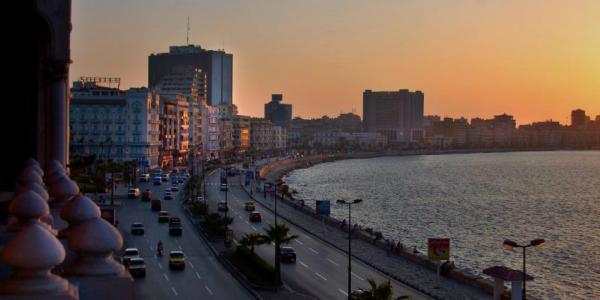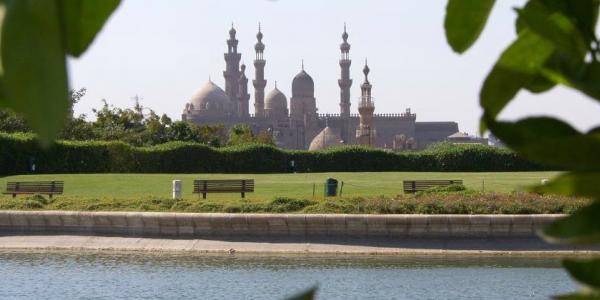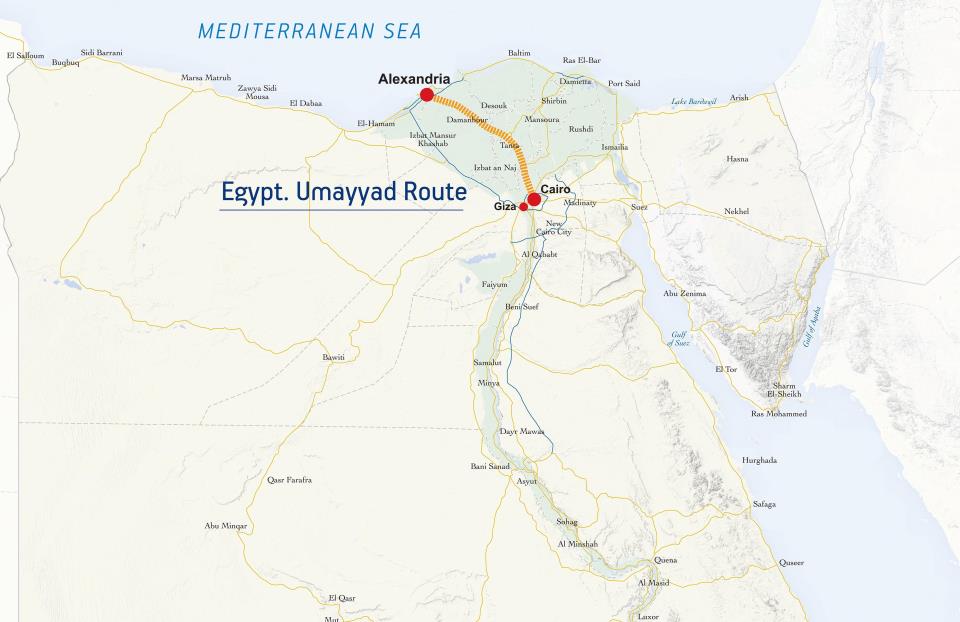
According to the Greek geographer Herodotus, “Egypt is a gift of the Nile”. The river’s mighty waters form an uninterrupted oasis, a long strip of intensely green lands encircled to the west by the Libyan Desert and to the east by the Arabian Desert. North of Cairo, the Nile divides into various branches that fan out forming the fertile Nile Delta, which drains into the Mediterranean. Apart from a few oases scattered about the desert, almost all life in this North African country is concentrated in the Nile valley, which has truly astonishing heritage in terms of its agriculture, cities and society amassed over five thousand years of history.
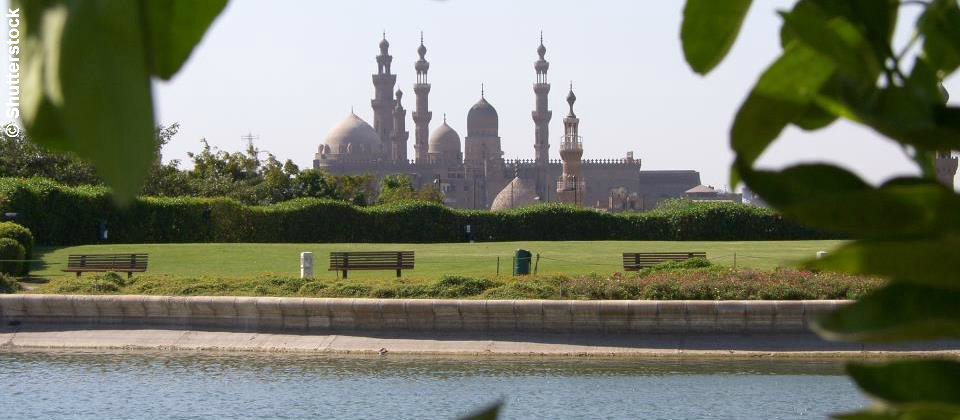
The Pyramids, the Temples of Karnak, the Tombs of the Kings… The banks of the Nile have given rise to countless wonders and to a civilization of granite-like endurance that continues to fascinate. Ancient Egypt first entered history around 3100 BC when the peoples that had settled on the banks of the Nile created hieroglyphic script, developed agriculture and numerous techniques for working the land, irrigation and construction. Lower and Upper Egypt eventually united forming the first nation-state within clearly defined frontiers under the supreme authority of Pharaohs. This ancient land was ruled by 31 dynasties for almost three millennia. Traditionally the history of Ancient Egypt is divided into three great periods or “Empires”: Old, Middle and New, separated by intermediate periods characterized by instability and foreign invasions.
ROUTE OF THE UMAYYADS IN EGYPT
The first millennium BC was a period of decline and of foreign domination with Libyans, Ethiopians, Kushites, Assyrians and Persians successively conquering the country. In 332 BC the conquests by the Macedonian Alexander the Great marked the beginning of a prosperous Hellenistic period in the land of the Pharaohs. Alexandria, the new capital founded by Ptolemy, one of Alexander's generals, would become a brilliant beacon of culture, thanks to its Museion and its famous Library, which was built to house all knowledge and to encourage philosophy and the sciences to flourish. Today the Alexandria of the Ptolemies has lost its famous lighthouse, one of the Seven Wonders of the Ancient World, but the tombs of Anfushi, the catacombs of Kom el-Shokafa and the fascinating Greco-Roman Museum continue to highlight the cosmopolitan nature of the Mediterranean city in the Ptolemaic period. This period is also characterized by an interesting fusion between Hellenistic elements and others inherited from the pharaonic Egypt, such as the creation of a new cult to the God Serapis and the birth of a new language and script: Coptic. The deep-rooted nature of the ancient local culture obliged even Imperial Rome, the oppressive occupier of the country from the first century BC, to prudently respect the beliefs of the Egyptians and their priests, by allowing them to build magnificent new temples on the banks of the River at Dandarah, Esna, Kom Ombo and Philae. The ancient Egyptian and Ptolemaic civilization finally succumbed to the unstoppable spread of Christianity, which began with the preaching of St Mark in Alexandria and in the fourth century AD the country was absorbed into the Byzantine Empire.
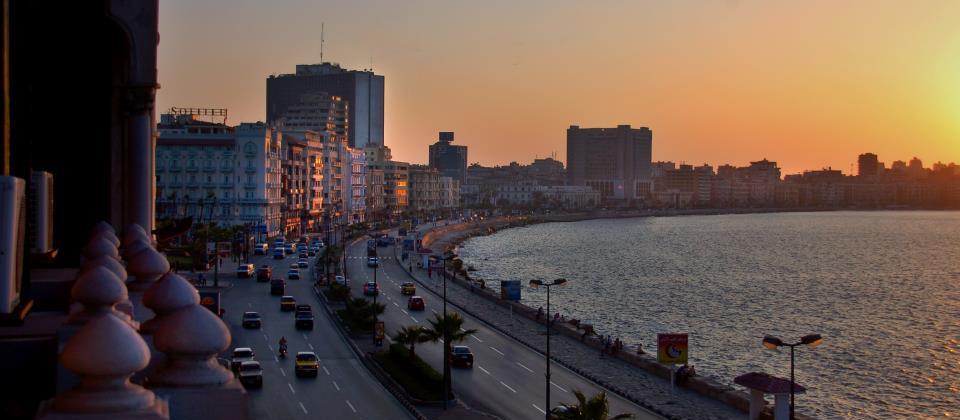
The Arab conquest of 639-640 AD brought Egypt into the Islamic realm. General Amr Ibn al-As founded a camp city called Fustat to house the conquering armies and govern the country from a strategic position to the south of the Delta.
5,000 years of civilization have contributed to the cultural heritage of Egypt and to building the strength and independence of its citizens. The country’s history is a continuous sequence of invasions, eras of glory, battles and victories. From the 7th century onwards, it was ruled by numerous dynasties and foreign powers: the Umayyads, Tulunids, Abbasids, Fatimids, Ayyubids, Mamelukes, Ottomans, and finally the French and the British... In 1922, the country finally won its independence from the United Kingdom. Testaments to the past include the Great Pyramids at Giza, the temples at Luxor, Abu Simbel and Saint Catherine's monastery. The cities of Alexandria and Cairo are shining examples of the Islamic era, with outstanding monuments such as the Islamic district in Old Cairo, and the El-Qala’a district in Alexandria.
Cairo’s Islamic quarter starts with al-Azhar street and the Qalawun complex, one of the city’s most famous monuments, which stretches from Bab al-Futuh in the north to Bab Zuweila in the south (the old gates of Cairo during the Umayyad dynasty and later under the Mamelukes). People like to visit the capital's medieval markets such as Khan El-Khalili. The Museum of Islamic Arts in Cairo is considered one of the greatest of its kind, with exceptional collections and a main façade adorned with decorations and recesses inspired by Islamic architecture. It has pieces from all the different periods starting with the Umayyad dynasty. Cairo also has plenty of modern attractions including cinemas, theatres, shopping malls, an opera house and visitors can also enjoy oriental music and dance shows. Another attractive option is a stroll along the Nile Promenade, which has excellent views of the river, while the Egyptian museums and the Pyramids of Giza transport you back in time to the ancient lands of the Pharaohs.
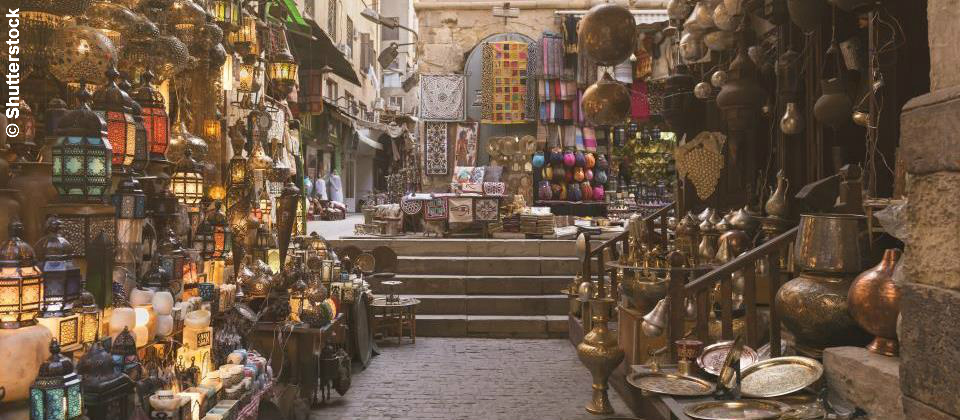
The Alexandrian coastline extends no less than 70 km from the north-western side of the Nile Delta to Lake Mariout in the east. The coast is dotted with beautiful bays and harbours, such as Abu-Qir and the crescent-shaped Eastern Harbour, which is overlooked by the majestic Qaitbey Fortress. The Corniche in Alexandria is a treat in both summer and winter. Starting at Ras El Tin and stretching all the way to Montazah, it enjoys spectacular views of the White Mediterranean. The Corniche was built in the 1930s and further developments were made to it in the early 1990s. Beaches stretch along the coast from Maamoura in the east all the way to the Agamy beach west of Alexandria. The Al-Qala’a district of Alexandria includes the fort of Qaitbey, the National Museum and the Library of Alexandria, which is one of the largest most important libraries in the ancient world. The library has various rare collections of books and historical objects offering a mixture of history and legend and highlighting the enormous wealth of Egyptian history in all the different eras.
Weather |
LanguageArabic |
Time ZoneEET (UTC +2h) |
CurrencyEgyptian Pound |



